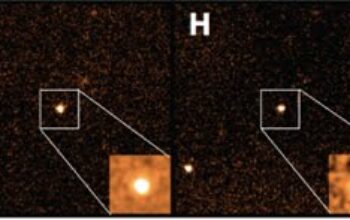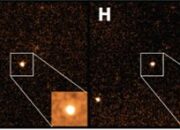In recent years, the field of antimatter research has made significant strides, with a transformative approach that focuses on “cold” antiatoms. These cold antimatters represent a new frontier, not only in fundamental physics but also in their potential applications across multiple scientific domains. As the understanding and manipulation of antimatter evolve, scientists are beginning to visualize its enormous potential. Examining this phenomenon requires a multi-faceted exploration of its implications, methods of production, and the tantalizing breakthroughs that lie ahead.
Antimatter, defined as the counterpart to ordinary matter, has perplexed physicists for decades. Each particle of matter has an associated antiparticle: electrons possess positrons, while protons are mirrored by antiprotons. When matter and antimatter collide, they annihilate each other, releasing energy as described by Einstein’s equation, E=mc². Until recently, the study of antimatter has been constrained primarily to high-energy particle accelerators, where only minute quantities could be produced. The advent of cold antiatoms marks a paradigm shift in this pursuit.
The advancement of cold antimatter research relies on the manipulation of ultracold temperatures, which can be achieved using laser cooling and other sophisticated techniques. By cooling antiprotons and positrons to near absolute zero, scientists have projected potential applications that extend beyond the realm of fundamental physics into innovative technologies. This capability is not only revolutionary but offers novel opportunities to challenge existing models related to the universe’s composition.
The production of cold antiatoms necessitates a broad understanding of particle physics and the forces governing atomic interactions. Experiments have demonstrated that by combining cold antiprotons and positrons, researchers can create antihydrogen—an antiproton orbiting a positron. Larger quantities of these cold antiatoms facilitate a plethora of experimental advantages, rendering them suitable for intricate investigations into fundamental asymmetries in nature.
Shifting our perspective on antimatter prompts consideration of its profound implications. On a cosmological scale, the dramatic balance between matter and antimatter raises captivating inquiries regarding the universe’s evolution. For instance, the visible universe predominantly comprises matter, leading to questions about the apparent scarcity of antimatter. This anomaly has been a longstanding conundrum within physics, often referred to as the baryon asymmetry problem. The exploration of cold antiatoms may yield insights into this imbalance and, ultimately, the genesis of the universe.
Additionally, the properties of cold antihydrogen could illuminate fundamental symmetries in physics. Imagine conducting meticulous comparisons between hydrogen and antihydrogen. By examining the precise interactions of these entities, scientists can probe the foundational principles governing the Standard Model while searching for deviations that might suggest new physics or the need for an extended framework. Such inquiries are not merely academic; they may reveal interactions that could bridge the theoretical framework of quantum mechanics with gravitational phenomena.
Cold antiatoms also herald new potential applications in the realm of technology. One exciting application lies in the domain of medical imaging. Positrons, in particular, are used in positron emission tomography (PET) scans, a prevalent technique for diagnosing various medical conditions. The advent of cold antimatter could refine these medical processes, improving imaging resolution and expanding diagnostic capabilities.
The perspectives offered by antimatter research are increasingly relevant in the context of energy production as well. Although harnessing antimatter as an energy source remains a theoretical pursuit, the energy released from matter-antimatter annihilation is profound. This unique energy density presents enticing possibilities. If safe and efficient methods to contain and utilize antimatter can be developed, it could catalyze breakthroughs in energy generation and space propulsion systems, making interstellar travel a conceivable reality.
Of equal importance to the revelations associated with cold antiatoms are the ethical considerations that arise from this frontier. The manipulation of antimatter, while exciting, taps into deeper philosophical questions regarding humanity’s responsibility in the pursuit of knowledge. As we delve deeper into the implications of such powerful phenomena, it is crucial to assess potential risks and benefits on both a societal and environmental level.
Concurrently, the exploration of antimatter enriches our understanding of fundamental scientific principles, potentially guiding future theories and prompting reevaluations of established concepts. The trajectory taken by antimatter research influences a multiplicity of disciplines, including quantum mechanics, cosmology, and particle physics, fostering collaboration across various scientific communities.
In summation, the emergence of cold antiatoms underscores a pivotal shift in our conceptualization of antimatter, rife with possibilities that extend far beyond traditional physics. From unraveling cosmological enigmas to redefining our technological capabilities, the significance of this research cannot be overstated. By expanding our understanding of antimatter, we tread a path filled with both challenges and groundbreaking discoveries. The future of antimatter, anchored by the promise of cold antiatoms, invites scholars and enthusiasts alike to engage in rigorous inquiry, reshaping our comprehension of the universe as we know it.










